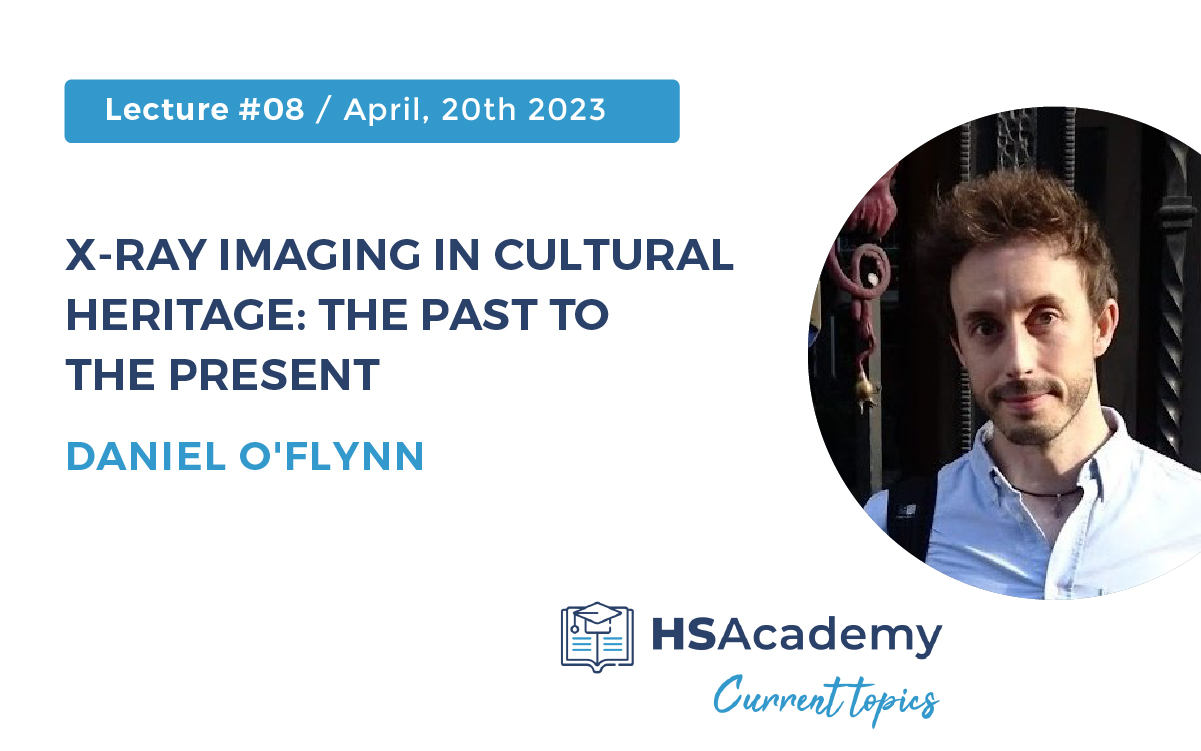
CTinHS Lecture #08: X-ray imaging in cultural heritage: the past to the present
The CTinHS lectures are part of HS Academy: a collaborative initiative between IPERION HS (www.iperionhs.eu) and E-RIHS (www.e-rihs.eu). The two European projects integrate facilities of recognized excellence in Heritage Science, offering access to a wide range of high-level scientific instruments, methodologies, data, tools and training opportunities for advancing knowledge and innovation in the field.
Lecture #08 of the “Current Topics in Heritage Science” series will be delivered by Daniel O’Flynn (Department of Scientific Research, British Museum) on Thursday, April 20th, at 3 pm (Rome time).
Abstract
Very soon after the discovery of X-rays in 1895, researchers realised their potential for cultural heritage research. Within a year, an Egyptian mummy was examined using X-rays, allowing researchers to study human remains without disturbing the surrounding wrappings. X-rays have since been routinely used to look under the surface of heritage material, to answer questions on ancient traditions of manufacture and use, and to shed light on the lives of people and animals. Two-dimensional X-ray imaging (X-radiography), whilst relatively fast, does not always capture internal features inside complex or multi-layered objects. X-ray tomography (X-ray CT scanning) is a technique which gives a three-dimensional view of the interior of an object, with the ability to virtually slice through different layers and allowing much more detailed examination of internal features – albeit with the requirement of a more involved experimental set-up and significant challenges in data processing and visualisation. Today X-ray tomography is conducted in a variety of research fields using medical CT scanners, laboratory-based scanners, and at centralised large-scale synchrotron facilities.
This talk will give an introduction to the principles and current research directions of X-ray tomography, as well as its challenges from a heritage science perspective. Case studies will be presented showing applications of X-ray tomography on the collection of the British Museum.
Date
April 20th, 2022 at 3 pm (Rome time zone)
You will learn
. The principles of X-ray imaging
. X-rays, radiography, tomography – what’s the difference?
. What is needed to create X-ray tomography datasets
. How X-ray tomography can be applied to heritage science
. Complementary approaches
Key topics we’ll cover
. A brief history of X-rays
. X-ray tomography methodology
. Challenges and limitations of X-ray tomography
. Applications of X-ray tomography
. Advances in tomographic imaging
Duration
45 minutes (30 minutes + 15 minutes Q&A)
Speaker
Daniel O’Flynn is an X-ray Imaging Scientist in the British Museum’s Department of Scientific Research, responsible for the operation of the large-scale X-radiography and CT facility housed beneath the Museum. His research applies advances in imaging to gain insights into ancient cultures, through the manufacture and use of objects and the lives of people and fauna.
Recommended reading for the lecture:
Withers, P.J., Bouman, C., Carmignato, S. et al. X-ray computed tomography. Nat Rev Methods Primers 1, 18 (2021). https://doi.org/10.1038/s43586-021-00015-4
